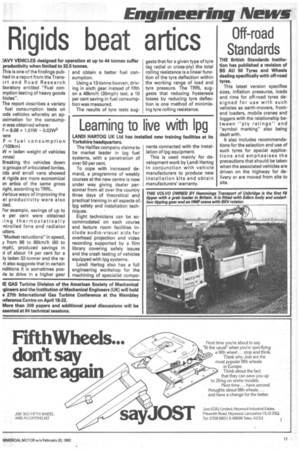Rigids beat attics
Page 11

If you've noticed an error in this article please click here to report it so we can fix it.
ration at up to 44 tonnes suffer tonnes.
EAVY VEHICLES designed for ope productivity when limited to 32.5 This is one of the findings pubhed in a report from the Trans)rt and Road Research boratory entitled "Fuel conmotion testing of heavy goods hides".
The report describes a variety fuel consumption tests on ,ods vehicles whereby an apoximation for the consump,n was obtained where: F = 8.66 + 1.61W — 0.02W2 tare
F -= fuel consumption :/100km) N = laden weight of vehicles innes) Breaking the vehicles down ri groups of articulated lorries, rids and small vans showed • rigids are more economical )n adios of the same gross qght, according to TRRL. Various ways of improving the el productivity were also ;ted.
For example, savings of up to e per cent were obtained ;ing thermostatically ntrolled fans and radiator utters.
'Modest reductions" in speed, y from 96 to 88km/h (60 to mph), produced savings in )l of about 14 per cent for a ly laden 32-tonner and the rert also suggests that in certain nditions it is sometimes posde to drive in a higher gear and obtain a better fuel consumption.
Using a 13-tonne boxvan, driving in sixth gear instead of fifth on a 48km/h (30mph) test, a 10 per cent saving in fuel consumption was measured.
The results of tyre tests sug
gests that for a given type of tyre (eg radial or cross-ply) the total rolling resistance is a linear function of the tyre deflection within the working range of load and tyre pressure. The TRRL suggests that reducing hysteresis losses by reducing tyre deflection is one method of minimising tyre rolling resistance.


















































